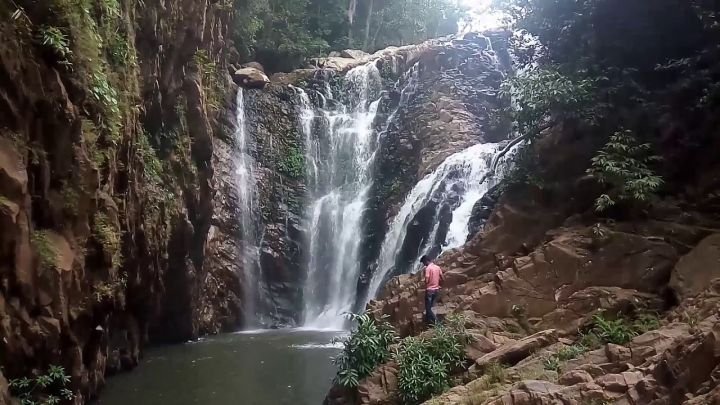Tourist Places to Visit in Jispa, Lahaul and Spiti, Himachal Pradesh, India
Jispa is a village situated in Lahaul and Spiti District of Himachal Pradesh in India. It is situated about 388 km from the state capital city Shimla and about 20 km north of district main town Keylong. Jispa is a tourist centre houses a folk museum and a beautiful valley.
Jispa is located between latitude 32°38′0″ in the north and longitude 77°10′0″ in the east and the town is positioned at an elevation of 3,200 meters. Jispa houses a helipad, a post office and a monastery. The forest near Jispa home to special species of animals like yaks, dzos, Tibetan antelope, argali, kiangs, musk deer, snow leopards, ibex, brown bears and foxes.
People, Lifestyle and Religion in Jispa:
The population of Jispa comprises of Tibetan and Indo-Aryan. The official language of Jispa is Hindi and also the natives speak other Indian and Tibetan languages. The houses in Jispa are built in the style of Tibetan architectural.
Agriculture is the main economy source of the locals of Jispa. Potato is the general crop grown in Jispa and also natives are involved in animal husbandry, government services and weaving business.
Trilokinath Temple is the major temple located near Jispa and also the locals celebrates The Losar festival with Tibetan fashion during the months of January and February every year.
Food and Shopping in Jispa:
The daily diet of Jispa are very similar to the rest of the regions of the state. Non-vegetarian cuisine is more preferred in Jispa and the natives use lentil, broth, rice, vegetables highly in their dishes. Madira, Pateer, Chouck and Bhagjery are some of the special dishes of Jispa.
Shopping near Jispa is a unique pleasure as the charming and romantic ambiance adds that extra zing to the shopping expedition. Tibetan handicraft items like antiques, Buddhist style curios, carpets, woolen shawls, rugs and Feng-Shui items can also be bought near Jispa.
How to reach Jispa?
Private vehicles like Taxis, Buses and Taxis provide transportation services to tourists to reach major tourist destination near Jispa Village. Manali Bus Stand is the main bus stand for its surrounding regions and also plenty of vehicles pass through Jispa and further towards major towns of the state.
Panch Rukhi Railway Station is the nearest railway station to Jispa located about 100 km. Other railway stations placed near Jispa are Baijnath Mandir Railway Station and Palampur Himachal Railway Station. Jispa is placed 190 km away from its nearest airport Bhuntar Airport.
Places to see near Jispa:
Chandra Taal:
Chandra Taal is located on the Samudra Tapu plateau at an elevation of 4,300 meters. It lies in 32.47518° N latitude and 77.61706° E longitude and positioned at an altitude of 4250 meters.
The name of Tall derives from its curved shape and is one of the favorite spots of trekkers and campers. Chandra Taal is located about 30 km from another popular tourist destination Suraj Tal.
Huge fields on the banks of the lake are the camping places. During springtime, these fields are carpeted with hundreds of varieties of wildflowers. The main amazing thing about this lake is that there is no noticeable basis of this lake but there is an observable opening of this lake which means that water to this lake comes from underground. May to early October is the great time to visit Chandra Taal.
Tabo Monastery:
Tabo Monastery is located in Tago Village of Spiti Valley of Himachal Pradesh. There are many precious groups of thankas, manuscripts, fine-preserved statues, frescos and widespread murals which wrap almost every wall of monastery.
Kardang Monastery:
Kardang Monastery is the most important monastery located on Lahaul Valley. It is positioned on the banks of River Bhaga at an elevation of 3,500 meters. The Monastery was constructed during the period of 12th century and has a bigger library of Buddhist literature.
Gandhola Monastery:
Gandhola Monastery also known as Guru Ghantal Gompa which placed on the Manali Road about 19 km from Keylong Town. It is believed that Guru Rinpoche was the founder of Gandhola Monastery. This monastery is popular for its eight storey fort with flashing layers of stone and wood.
Other tourist places near Jispa include:
- Dhankar
- Shashur
- Kye Monastery
Ideal time to visit Jispa:
From January to March is the great time to reach Jispa due to the celebrations of The Fagli festival and The Losar festival.
Accommodation options near Jispa:
The major hotels situated in Jispa, Keylong and Manali are as follows:
- Padma Lodge
- Hotel Jispa
- Hotel Ibex
- The Chandrabhaga
- Hotel Deykith
- Highland Park
- Apple Country Resorts – Manali
- Honeymoon Inn
- Hotel Manali Heights


